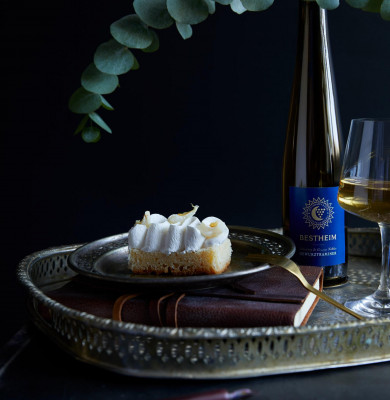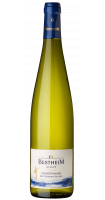
What are residual sugars?
What is the residual sugar? Many of you are asking this question and it is not always easy to understand. Bestheim helps you to understand it better.
Residual sugars in wine
of sugars are naturally present in the grapesEvery grain of reason contains sugar. Logically, these sugars are therefore found in the wine during the vinification. These sugars are the glucose and the fructose.
During the alcoholic fermentationThe sugars in the grapes are transformed into alcohol by the action of yeast. The residual sugars are then the sugars remaining in the wine after the fermentation process (when not all the sugar has been transformed into alcohol).
Residual sugars and wine types
All wines have residual sugars in varying amounts. The level of residual sugars in the wine determines its profile, its mouth feel at the time of tasting.
The level of residual sugars in the wine determines whether the wine is dry, sweet, mellow or syrupy.
The white wines can be of all types. This can vary according to the grape variety and the winemaker's style of winemaking. In Alsace, for example, we can find a Muscat The wine is vinified dry whereas it is rather sweet in the rest of France. It is the same for the Gewurztraminer which is generally a grape variety giving a sweet wine.
On the other hand, in France, all red wines are obligatory dry.
We measure the sugar content of a still wine (i.e. not effervescent like a Cremant of Alsace for example) in grams per liter. The different wine profiles are broken down as follows:
- Dry white wine : less than 4 g/l
- Semi-dry white wine : from 4 to 18 g/l. The sweetness is more sensitive when the wine is young. With the maturation of the bottle, it fades.
- Sweet white wine : from 12 to 45 g/l
- Sweet white wine : more than 45 g/l (can go up to 200 grams of sugar per liter). These are wines with a marked sweetness in the mouth (for example Late Harvest and Selections of Noble Grains)
Discover more about the different styles of Alsace wine in this article.
Note that the sugar content of a still wine is not the same as that of a Crémant for a given type. For example, a still semi-dry wine will not have the same sugar content as a Crémant d'Alsace demi-sec. Thus, for sparkling wines, we use this classification:
- Extra-crude : between 0 and 6 grams per liter
- Raw: less than 12 grams per liter
- Extra-dry: between 12 and 17 grams per liter
- Dry: between 17 and 32 grams per liter
- Semi-dry: between 32 and 50 grams per liter
- Mild: more than 50 grams per liter
Residual sugars and Bestheim wines
Our vintages contain a variable amount of residual sugar depending on the vintages and the grape varieties (riesling, Pinot Blanc, Pinot Gris, Pinot Noir, Gewurztraminer, Muscat, Sylvaner).
Because of the grape variety, a riesling or a Sylvaner (two dry white wine varieties) will obviously have less residual sugar than a Gewurztraminer.
A still white wine from theMoon hunterswill have less residual sugar than a Grand Cru, which will itself have a lower sugar content than a Late Harvest.
In the range of Alsace Bestheim wines, these are the Selections of Noble Grains(sweet wines) that contain the most grams of sugar per liter of wine due to their vinification process.



